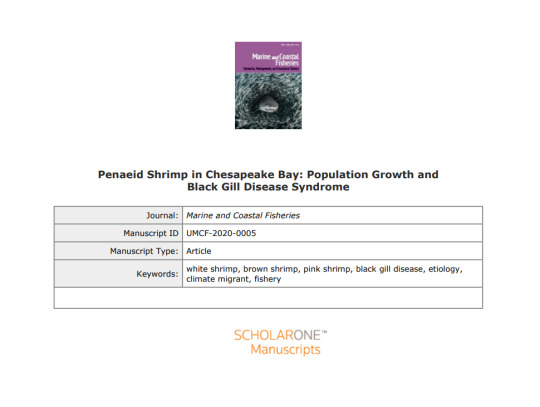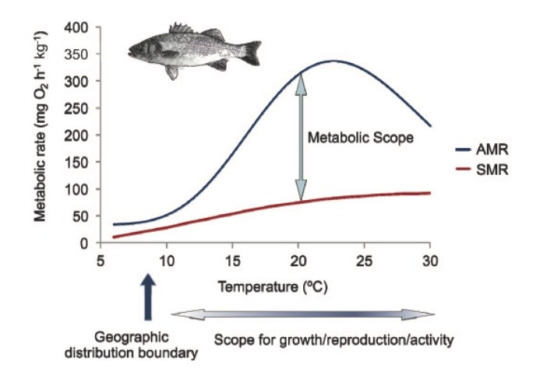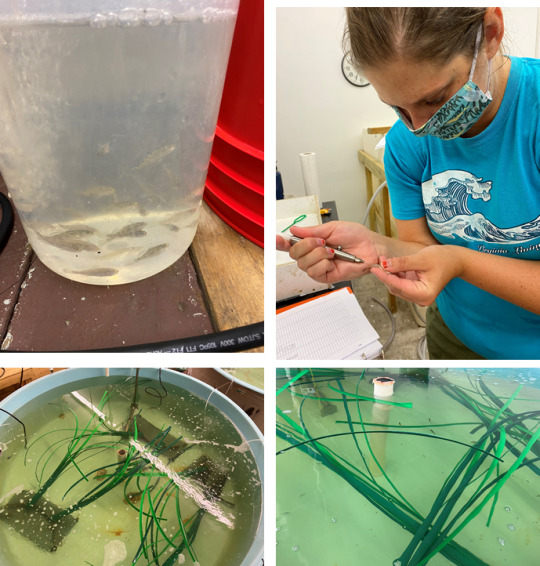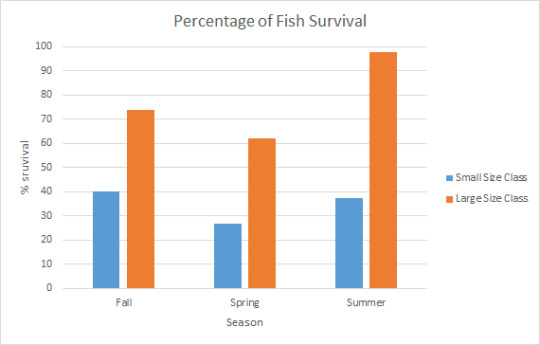#procrastinating doing my larger animation project by doing a smaller animation
Explore tagged Tumblr posts
Text


Mystober day three: Harmony
Mystober day four: Mechanism
#procrastinating doing my larger animation project by doing a smaller animation#mystober#myst#riven#redwoods art
48 notes
·
View notes
Text
Marine Biology Story of the Day #14
So…it’s been a while.
I don’t know if anyone else is dealing with crippling anxiety, but I sure am right now. It’s just one of the joys of being a liberal scientist living deep in a rural red state. You literally can’t escape the Trump Fuckers down here, it’s everywhere you look. Hell, I can’t even sit in my living room without seeing our neighbors dumb flag flying on their flag pole or be forced to watch one of these weird boat parades that have been popping up everywhere lately.
I’m tired. I’m scared. But I’m also 100% over this shit.
So, instead, I’m trying to pour myself into my work. And I want to put quality content on this blog, and I’ve just been procrastinating on it for weeks because I want whatever I write, whatever I tell you about to be good enough for the reblogs, but tbh, that’s not the point of this. The point of this is teach people about the scientific process and how REAL research is done. It’s a ton of work, it’s usually monotonous, and there’s a lot of writing and editing involved.
That being said, I officially, after 3+ years of work, have my first manuscript accepted into a peer reviewed journal.

If you had asked me 4 years ago if I had thought I would ever be published. I would have said no. And that is because the place I was working for chipped away at my confidence so completely that I thought I wasn’t worthy of working in this field. Academia be like that sometimes.
But now I’ve started working for Texas Parks and Wildlife, which in most ways has been a dream (minus living in small town nowhere America, see complaints above). The organization is actually really awesome to work for and I have so much more leeway when it comes to designing my own projects and working on things that I actually WANT to work on. Not to mention, my boss is awesome and is super supportive.
So today, I think I’ll talk about a study that I just wrapped up lab and field work for in September. I’m currently working on the data analysis at the moment.
SOOOO TPWD developed a huge stock enhancement program back in the 1980’s when they noticed that the population of a popular game fish, red drum, was on the decline. Stock enhancement basically means they breed adult wild red drum, they allow the eggs to hatch and rear the larval fish to a size deemed big enough that they can release them into Texas estuaries to help bolster the population. Red drum stocks have actually improved since this this hatchery program was implemented.
Red drum are gorgeous charismatic predators, and they get the drum name from the sound they use to communicate. Check out the sound here.

Part of my job is to figure out how to make the hatchery program better through wet lab experimentation. Basically, the questions I try to answer are: How do we grow these fish faster, with least amount of mortality, and with the best, robust fish?
So, when I first got here, I found two issues with our red drum hatchery program. 1) Fingerlings (very young juvenile fish) are released at a very small size of 35 mm. INTO THE WILD. Now, the size of a fish is very directly tied to their mortality…larger fish experience less predation and have better metabolisms to deal with temperature and salinity changes, which leads us to the second problem 2) The hatchery program releases red drum at times opposite of when these juvenile fish would actually be present in the wild. Red drum spawn offshore in early winter, and the baby fish move into bays Dec-Mar…but we release OUR hatchery fingerlings Mar-Nov. The reason for this is because we don’t want the hatchery fish to compete with wild red drum, which makes sense, but we are introducing these fish to a wide range of temperatures and salinities. As you know, Texas is hot as fuck in the summer and salinity in some bay systems is classified as hypersaline lagoons, which is almost like pure brine (this is due to hot temps evaporating water from the bays and leaving salt behind).

Now fish, as “cold blooded” animals, don’t make their own heat, so their metabolism is controlled by environmental temperatures. All fish have an optimal temperature for growth, in which their growth rate is the highest, and then their growth and metabolism starts to decline toward their critical thermal maximum (CTM) in which their metabolism just starts shutting down and they die. This is why temperature is so important in fish biology, and larger fish typically have higher CTMs an therefore better survival.

(an example of how metabolism is impacted by temp. In this case, optimal temp is around 20 degrees Celsius, and CTM is around 23-25 degrees Celsius)
So how did I test this? Well, I chose body size and “Season” as my two variables—I chose Spring (May), Summer (August), and Autumn (November) to see how the temperature and salinity of our local bay system would impact fish growth. And, within each season, I tested both a small size class (35 mm and under) and a large size class (36 mm and over) to see how initial body size upon release would impact the fishes’ growth.

(diff b/w two size classes)
I ran these trials in my wet lab with sea water pumped in from our coastal bay system and I would adjust temperature daily to reflect the water temperatures recorded from the bay. I would receive hatchery fish that were ready for “release”, tag them, measure and weigh them, and then release them into their experimental tanks (if you want to learn more about how I tagged them, check out this post). I had one tank with small fish, and one tank with larger fish, because if they were mixed it’s likely that the big fish would cannibalize the smaller fish. The fish lived in these faux habitats for 21 days, and I would remove mortalities (dead fish) daily. They were fed 10% of their body weight to keep up with the estimated 0.1 g/day growth rate described in the literature.

At the end of each study, I removed all fish, measured and weighed them again, and read their tags. Once I knew what fish they were, I could match them up with their start weights and get an idea of their growth rate over the 21 days.
So, the data analysis is still a work in progress, and I’m going to run some more complex models, but here are some of my preliminary results.

First, here is our survival of fish for each trial. Like I said, fish did die before the end of the trial (young fish tend to do that), and this graph basically shows that overall, the larger size class had much better survival than small, especially during warmer months.


This figure basically shows the CHANGE in length (x axis) vs the CHANGE in weight (y axis) of the smaller size class (above) and the larger size class (below). I’ve scaled the figures so the axis have the exact same scale. The colors/shapes of the dots represent the “Season” of the trial (Autumn, Spring, or Summer). You can see that the large size classes had a much greater change in growth across all trials, and had the greatest growth during summer.
So this is just the beginning of data analysis, I want to do a more in depth look at temperature, size, and salinity in statistical modeling, but this is kind of the preliminary lay out of the data. Basically what I think this data is telling me is that we need to release fish at larger initial release sizes, because they have much better survival and growth compared to fish with smaller initial release sizes.
And the whole goal of the hatchery program is to make sure our fish survive in the wild.
If you want to take a peep at my accepted journal article, I’ll make sure to post a link when the article actually comes out online. The journal I submitted to (Marine and Coastal Fisheries) is an open access journal so everybody should be able to read it FO FREE. Next post I will be outlining another hatchery program study that I am excited to be working on in the near future (hint, it’s gonna involve flounder metamorphosis, which is a real bizarre process).
As always, if you have any questions, feel free to comment or contact me!
#marine biology#marine biologist story of the day#marine biologist#fisheries biologist#marine biology story of the day#ocean stories#red drum#stock enhancement#research#fish bioenergetics#fish growth
4 notes
·
View notes
Text
Reflection on My Guided Learning Animation Journey
Now that the final animation is complete, I would like to reflect on my Guided Learning journey in this semester!
If I have to identify challenges I faced, it would be:
Communicating and collaborating with SVA: I initially thought the project that was introduced to us in the SVA briefing was already on-going, and that I could simply help SVA by interviewing more vet techs around Singapore. Turns out, the project was not established yet, and both parties had different understandings on what the project was going to be like, which led to confusions between us. I also faced uncertainties where I felt like the project was not collaborative at all, as it felt as if I was only retrieving information from SVA, instead of helping them as initially planned during the SVA briefing for our GL proposals in school.
Small number of responses received: The low number of responses made me concerned as to how reliable the statistics will be, as 10 respondents definitely did not seem reliable. During this time, SVA mentioned that their survey results would be out soon, hence I initially thought I could use their results for analysis, and to pool a larger sample for my project. Hence, I decided to pause my animation progress to wait for the results before I proceed to work on the scenes that required the statistics. However, after pausing for a week, I realized that I would not have enough time to complete if I wait for the results to come out. Hence, I decided to continue with my animation without the data from SVA, ultimately sacrificing statistical reliability in my infographic.
Delays and postpone to project plan: After the delay and postponing of the animation progress due to the pause in the progress as previously mentioned, I realized that together with my underestimation on how long an animation scene will take to complete and the fact that the initial timeline plans were postponed, I may not be able to complete all of the scenes that were planned out in my initial storyboard. This led to alterations to my final storyboard, where I unfortunately had to cut out scenes that I felt were not as important as addressing the misconceptions about being a Vet Tech.
Additionally, if I have to identify the weaknesses that I have realized in myself throughout the journey, it would be:
Overconfidence/underestimation: As seen from my initial timeline that I planned, I was definitely too overconfident and severely underestimated the amount of time and work I actually needed to put in into this project; as I thought it would be simple.
Lack of realistic planning: To add on to the 1st point, I failed to plan realistically due to my overconfidence.
Tendency to procrastinate: Addition to the previous 2 points, due to my overconfidence and lack of realistic planning, I had the tendency to procrastinate throughout the project as I thought completing it would be a breeze. This led me to set this GL project aside while I handle the other modules’ projects, before reality struck me.
Poor time management: While on the midst of this project, there were concurrent projects ongoing in the other modules as well. My lack of proper time management resulted in pushing back one of the projects, and also a work-life balance in most days.
Irrational fear: While on the Planning stage, I was very hesitant to send out e-mails to various clinics all around Singapore as I felt that they would not take me seriously, and may find my request to be “ridiculous”. This led to me waiting for a minimum of 1 week before I sent out another e-mail again, as I was worried that sending out another e-mail would burden the clinics, and that my e-mail would be seen as a “spam”.
Too detail-oriented: Although it may be a good thing if in the right situation, it was a weakness in me as I was already facing time constraints even after reducing the number of scenes. I realized that I had to speed up in drawing the frames. This resulted in half of the animation looking less-detailed as compared to the first two scenes. Various frames had to be re-used as well in order to save time from drawing more individual frames. Due to this, I felt rather uncomfortable proceeding with the project as I tend to strive for perfection and I disliked the feeling of rushing and not being able to give my best in the animation.
If I have to give 3 words to describe the overall project, it would be:
Creative: Mainly because of the fact that the project is mainly focusing on the arts, and I had to come up with a plan for to execute my project independently.
Interesting: Not only because I get to learn about animating and the experiences from actual veterinary technicians/nurses, but also because of the challenges I had faced. I initially did not expect that this project would experience many roadblocks. For an ordinary person, who have thought an animation project would have so many setbacks and challenges involved when it is supposed to just be “drawing” only?
Mind Opening: A major word I would use to describe this entire journey. This project has taught me that there are many blind spots and weaknesses in myself that I was not aware of. I initially thought I was already an independent, self-initiated learner, and I thought this project would be easy enough to complete quickly as I already had an art background. I thought I could spend time to “set this project aside” to handle other modules. However, I was quickly struck with reality when I started animating. I definitely underestimated how long it takes to complete 1 scene and how incredibly time consuming it is, despite the simple concept behind animation.
If I have to come up with 3 values to describe what I have learned in this project, it would be:
Open-minded: In addition to ‘Mind Opening’ as previously mentioned, this project taught me this value as I realized I needed to be open minded to be able to find ways to solve the setbacks I faced, I needed to find alternative ways instead of following 1 exact pathway. If I were to continue being insistent on following the initial pathway that I planned for the project (e.g. to get SVA’s results, every scene must be perfectly detailed and smooth, etc.), I would not be able to complete the project in time.
Additionally, on a deeper level, I learned to be receptive to criticism, not only from the feedback I obtained from the animation, but through realizing about my weaknesses in the things I do, as stated in the previous paragraph, and learning how to improve from there. Many people tend to stray away from knowing their weaknesses (Let’s be honest, it doesn’t feel pleasant hearing bad things about yourself.), which can results in a sheltered, fixed mindset which is detrimental to future growth.
Curiosity: Other than willing to learn more about animation, I forced myself to search beyond my comfort zone. I was initially afraid to send out emails to various vet clinics nationwide as I fear that they may view my request as a “burden”, or that my questions are nonsensical, ridiculous, and a waste of time to answer. Despite getting only 10 responses, those 10 that I received ended up to be very insightful and I realized that obtaining 1st hand information about something I am very passionate about is much more rewarding than a 2nd hand, book resource. This helped build further curiosity and confidence in me to be willing to learn more from others firsthand in the future.
Independence: In the midst of my project journey, I eventually came to realize that I could not rely on SVA for the results responses.
This has taught me to not rely on others for my learning, and I should take initiative in my learning and the things I do in the future.
If I could add on 1 more value, it would definitely be Appreciation. This entire journey taught me to appreciate the smaller things in life especially after experiencing how animating actually is like. It did not dawn on me that animating actually has many things happening backstage, and it’s not simply just “draw many frames”, as your mindset, motivation, and perseverance all play a part in the completion of the work as well. This project taught me to appreciate even the minute things in life as you may not always be aware of what is happening backstage that allows the small things to happen.
If I were to reflect on the things that went well for my project, it would be:
The overall execution of the animation: I was quite pleased with the final outcome especially when the narration was added in, despite the reduction of scenes and poorer-quality frames due to time constraint.
Application of what I’ve learned from resources: Especially when drawing frames that represent falling/bending/movement. I believe that this strength could be applied to my academics, as modules such as Clinical Diagnostics Techniques, and Animal Diseases and Clinical Pathology are definitely more application-based instead of theory.
Overall, looking back at my Guided Learning journey, I am very glad that I have decided to embark on this despite the various challenges I faced in this semester. It has taught me so much more than just animation. This journey definitely taught me that in order to achieve future growth, one must be willing to reflect on one’s actions, identify weaknesses within themselves and further improve from there. Given the chance to embark on a similar project again, I would definitely give it another go with all the things I have learned from this journey.
0 notes